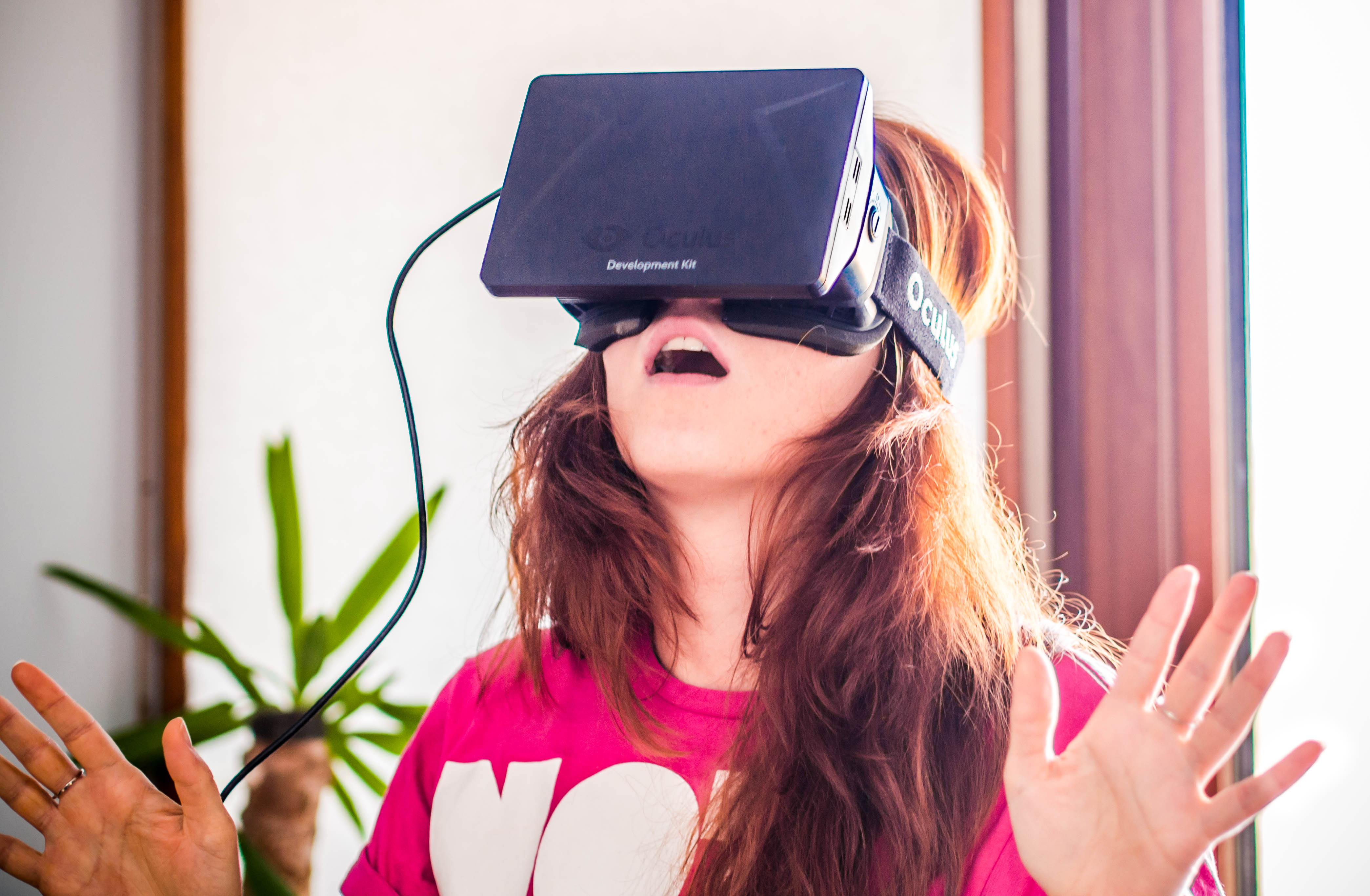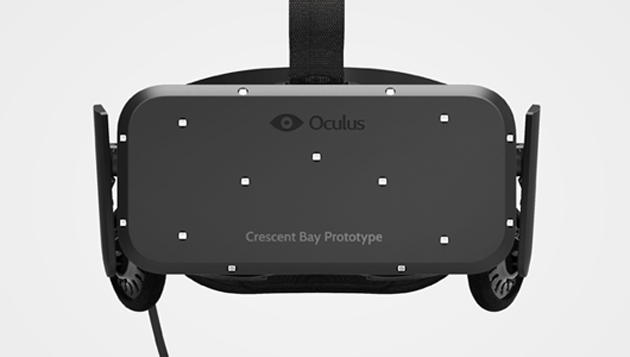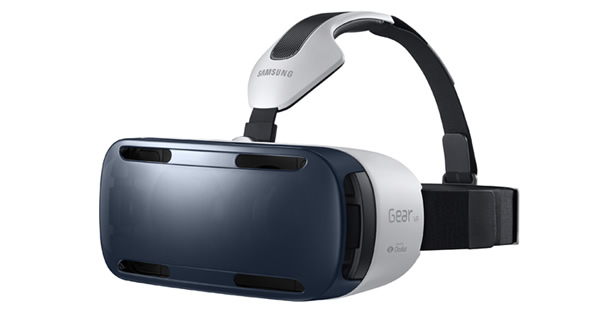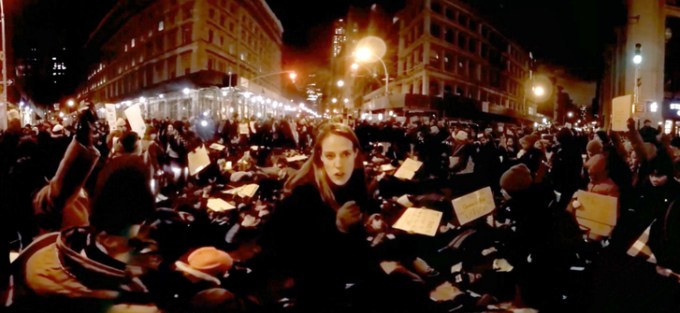“1996 called, they want their crappy VR ideas back.” reads one comment on Wired’s September 2014 article describing Marriott’s recent virtual reality teleportation experience.
It’s February of 2015, and pessimism still runs high when discussing virtual reality (VR). But evidence is mounting that this technology will be a game-changer across virtually every industry in the near future. Travel is a natural candidate for disruption, due to the inherent capability of VR to convincingly make a person feel like they are somewhere else.
While every new technology has it’s detractors, the majority of feedback on the Marriott campaign mentioned above – and the latest generation of virtual reality technology as a whole – has been positively exuberant from those who have tried it. (more on the Marriott campaign below, including video of reactions from virtual travelers)
My own first encounter was right in line – my initial experience made me an instant believer. It is difficult to move past the doubt and become excited about VR’s latest manifestation until you give it a go. But once you do, you understand quickly what the recent hype is about. It is a quantum leap better than anything you’ve seen or tried before. It is an amazing experience that sells itself.
Virtual reality, a technology we have been hearing about about since the 1980’s, has long been beleaguered with a stigma of false promises, relegated to the domain of video games. But it is finally on the verge of primetime, spearheaded by the purchase of Oculus Rift by Facebook in March 2014 for $2 billion. As of that moment, VR officially staked it’s claim to be taken seriously as a medium of it’s own, one that has the potential to change the way we consume content.
“This is really a new communication platform. By feeling truly present, you can share unbounded spaces and experiences with the people in your life. Imagine sharing not just moments with your friends online, but entire experiences and adventures.”
Adventures, you say?
Loosely defined, VR is a technology that, through the use of headgear resembling ski goggles and other peripheral equipment, fully immerses a person in a virtual world via 360°, 3-dimensional (3D) video, audio, and computer graphics.
I couldn’t find a comprehensive overview of what is currently happening and what is to come in the travel industry as it relates to virtual reality. I hope this article serves as a useful guide, and helps to spur the conversation.
Stay tuned for a second article focused on Augmented Reality (AR) in the travel industry. I believe that AR has the potential to be just as impactful as VR, if not more.
-Mike
A Quick Primer On Virtual Reality Technology
Oculus Rift
Currently, the most advanced VR headgear is the Oculus Rift. While it was originally expected to start shipping to consumers in 2015, it now appears that it will not be available to the public until February 2016. The anticipated selling price is around $350.
However, there are developer versions already available for sale (Oculus Rift DK1 and DK2). Developers are already actively experimenting with the units, creating new forms of games, videos, and interactive experiences. The fostering of a robust developer community is a smart move to generate quality content for consumption, as well as peripheral equipment that can be used with the headgear.
Samsung Gear VR
Samsung partnered with Oculus to release the Gear VR in late 2014, with a gradual rollout around the globe. The Gear VR requires a Galaxy Note 4 smartphone to power it. The quality of the experience is excellent and the price tag is $200, making this the most accessible and affordable high-quality unit available (as long as you own a Galaxy Note 4). This was the experience that convinced me personally that VR is the future.
Google Cardboard
Google has released a schematic for Google Cardboard, a crude virtual reality headset made from (you guessed it) cardboard, which can be powered by modern smartphones such as Galaxy Note 4 and iPhone 6. Google Cardboard headsets can be bought for around $20.
This is an ingenious way to get VR into the hands of the masses. There will likely be a few million of these and similar units in use by consumers by mid-2015. If you want to try out virtual reality yourself, this is the fastest and cheapest way to do it.
There is a plethora of VR headgear from other manufacturers available now and due to be released in 2015. One of the most interesting to watch is Sony’s Project Morpheus which will require owning a Playstation 4 once it is released.
Naturally, special cameras and software are needed to create 360° and 3D content for use with VR headgear. This technology is still nascent, but advancing rapidly.
The three-dimensional aspect of the VR medium is wholly convincing in well-produced content. Watching people’s reactions while they are experiencing it, as they cringe or scream in fright, wave their hands in order to stay on a virtual balance beam, or even fall right off their chair, illustrate the power of VR to engross the user in a virtual experience that feels very real.
As of now, anyone with a modern, large-screen smartphone can have a compelling VR experience via headgear such as the Gear VR or Cardboard. Those who choose to buy dedicated headgear such as the Oculus Rift will have an even more authentic experience. As new content and new uses for VR are created, there will be no stopping the spread of this technology.
Virtual Reality And The Travel Industry
The most obvious use of virtual reality as it relates to travel is surely “try before you buy”, also being referred to as “try before you FLY“.
The ability to experience a destination beforehand, in a manner far more realistic than words, photos, or video has ever been able to achieve, will likely drastically change the travel planning process within the next 3 to 5 years. Not that there’s anything wrong with words, photos, or video! But the power of VR is to make you feel like you’re actually there.
“You read a book; your brain reads letters printed in ink on paper and transforms that into a world. You watch a movie; you’re seeing imagery inside of a rectangle while you’re sitting inside a room, and your brain translates that into a world. And you connect to this even though you know it’s not real, but because you’re in the habit of suspending disbelief. With virtual reality, you’re essentially hacking the visual-audio system of your brain and feeding it a set of stimuli that’s close enough to the stimuli it expects that it sees it as truth. Instead of suspending your disbelief, you actually have to remind yourself not to believe.”
Travel companies large and small have started testing VR aggressively since the Facebook/Oculus announcement. Here are a few noteworthy examples.
Marriott
As described in the Wired piece linked at the opening of this article, Marriott has created one of the best virtual reality experiences for travel to date with the launch of their “Get Teleported” campaign, which toured the US in the fall of 2014. The experience transported newlyweds to Hawaii’s Wai’anapanapa Black Sand Beach in Maui and London’s Tower 42.
Particularly innovative in Marriott’s implementation is the simulation of 4-D (four-dimensional) elements such as heat, wind and mist, generated by pneumatic pumps in the floor, misting nozzles in the walls, heater blowers in the ceiling, fans in the ceiling and floor, and a “scent dispenser”, making the illusion of being on a beach or many stories above the ground all the more real.
Surely Marriott will start enabling their hotel properties to be explored in VR. Which hotel brands will join them from the outset?
Thomas Cook
Thomas Cook appears to be taking VR very seriously, making it a significant part of the company’s recently-launched digital transformation plan. In August 2014 they opened a concept store which allowed customers to be virtually transported to a tropical paradise using the Oculus Rift.
In an indication that the concept has legs, they subsequently announced that they are rolling out the experience to more stores in the UK, Germany and Belgium. VR content experiences will include New York, Rhodes and Cyprus.
Virgin Holidays
Virgin Holidays is right on Thomas Cook’s tail in their use of VR, utilizing the cheap Google Cardboard technology to put VR experiences of Riviera Maya, Walt Disney Resort, and Miami in all of their 50 retail stores.
The program rolled out in December 2014 and appears to be set for expansion in 2015.
Will “try before you fly” be a boon to travel agents in 2016?
Qantas / Emirates
In January 2015 Qantas airlines unveiled an in-flight VR program set to kick off in March. First-class passengers will be able to try the Samsung Gear VR headgear as an in-flight entertainment option. Sample content will include destinations in the airline’s network including Kakadu National Park.
Emirates airlines is also experimenting with using Oculus to show off their first and business class cabins.
Presumably they will also make use of the Oculus app called “Oculus Cinema” to let people watch movies during the flight. The Cinema app makes you feel like you are actually sitting in a movie theater.
British Airways
British Airways is also dabbling in VR, testing an Oculus headset on unsuspecting travelers around Europe, virtually transporting them to roller skate down the boardwalk on a California beach, ride a bucking bronco in Texas and ice skate in New York.
South African Tourism
South African Tourism may be the first tourism board to launch a VR project to help sell South Africa as a tourist destination. Virtual visitors can rappel down Table Mountain in Cape Town, or stroll through the Neighbourgoods Market in Johannesburg.
Could VR help would-be travelers feel more confident about booking travel to a region they may have thought was too dangerous or exotic?
In an article about SA Tourism’s project, Future Travel Experience pondered the potential of enabling transactions directly in the VR experience. While the potential of inspiring someone to purchase a vacation on the spot is interesting, in the short term it may be more likely that they would purchase a tour or activity they’ve just test-driven, perhaps while on the flight.
Could in-flight planning and shopping for last minute experiences in VR become a significant ancillary revenue driver for airlines, and a new marketing channel for local suppliers in 2016?
Destination BC
Another tourism board to meaningfully embrace VR is Destination BC, who is launching “The Wild Within VR Experience” in mid-2015.
“We think virtual reality is a great fit for tourism marketing. It lets our travel trade and media partners experience our destination in a new and unique way that has not been possible before. And, as the headsets become more widely available to consumers, virtual reality gives them a ‘360’ experience – immersing them in the extraordinary travel opportunities that British Columbia offers, from raw wilderness to refined cities.”
What is the history of virtual reality content in the travel industry, and why is now different?
With the rise of the Internet, the promise of digitally exploring a destination advanced by leaps and bounds. High-quality, ever-smaller digital and smartphone cameras joined forces with bandwidth increases and social networking to explode photo and video sharing by amateurs and professionals .
More recently, panoramic photos, 2D virtual tours, and 360° video have gained popularity as a medium that brings the feeling of being there even closer. Impressive uses of this technology have ranged from checking out every aspect of a hotel to flying over the Cinque Terre.
This type of immersive 2D content production was traditionally cost-prohibitive, but in the last few years the expense of the equipment needed to create this content has declined drastically. For example, Sphere (formerly TourWrist) has made it possible for anyone with a smartphone to create 360° spherical photography without special equipment.
However, virtual reality represents yet another paradigm shift. 2D content is inherently limited to a flat screen. The viewer typically needs to navigate using their cursor, arrow keys on the keyboard, or their finger on a tablet.
The effect of 3D is profoundly different than 2D. Only 3D, 360°, fully immersive content, which lets you look around the virtual environment naturally simply by moving your head, and draws on senses other than your eyes, has the power to really make you feel like you’re there.
“With this technology, the field of view (FOV) is so wide that a switch in your brain flips, and within a few seconds your brain feels like that is reality. It feels that what it’s looking at is actually where you are. If you have a small FOV, like many of the previous devices out there, your brain knows it’s looking at a screen.”
The uses of VR extend far beyond simply viewing content or playing games. It has deep social implications.
It’s one thing to re-create the feeling of “being there”, quite another to re-create the experience of traveling with your friends and family.
But VR may have this covered too. Just as video games are now inherently social, with hordes of players gaming with each other through the Internet, VR experiences will likely be even more interactive.
In the near future you’ll be able to sit next to your friends at the aforementioned virtual movie theater, ride to the top of the Eiffel Tower together, and of course play games together – all with virtual avatars that reflect each others’ facial expressions and emotions, deepening the virtual social experience. This is the social potential that Mark Zuckerberg saw in Oculus.
The real-time aspect of VR is important to consider. The history of travel content is based primarily on snapshots in time. Content has always had physical storage and bandwidth limitations. Webcams and streaming have only recently brought compelling live experiences to our screens.
As Internet bandwidth and availability continues to increase, real-time streaming of VR video will be possible. Would you be interested in visiting the Trevi Fountain right now just by putting on your headgear and loading an app, enabling you to see and hear what is going on at this very moment? This will likely be possible within just a few short years.
VR is not just about what you see. In a binaural VR experience, sound can originate anywhere around you and immerse you as convincingly as visuals. Imagine being able to hear a bird call from above you and look up to watch it flutter away, or hear the roar of the crowd all around you as you stand on the field during a World Cup match.
Implications and Questions
Over the next 2-3 years, virtual reality will become mainstream. The experience is simply too compelling not to. During the next 10 years, as the quality of the experience increases exponentially, VR has the potential to replace some live experiences. Eventually, many experts agree, virtual reality will become indistinguishable from reality.
What are the implications for the travel industry in a world where people may not need to travel because the virtual experience is as good as the real thing? What if you can go everywhere (in the universe?) without going anywhere?
What if the virtual experience is even better? For example, why travel to a concert, whether locally or internationally, when virtual reality can make you feel like you’re there – not just in the audience, struggling to see past the tall person in front of you – but on stage with your favorite artist?
Why take a business trip, when the promise of meaningful face-to-face interaction can finally be fulfilled virtually? Why deal with jetlag and airports, hotel beds and tipping if a virtual experience can close the deal?
The idea that virtual travel could be better may seem impossible to us because we love the real thing… but what about our children, who are growing up in a digital-first world?
Virtual reality is one of the trends highlighted in Skyscanner’s interactive report “the future of travel 2024“. Their quote of Technology Futurist Daniel Burrus takes the view that the virtual will not replace the real:
“Virtual reality won’t replace real travel, as is often portrayed in sci-fi movies. It will become a new form of showrooming, an incredible 3D taste of a destination that will make travelers long to experience the real thing.”
However, the report goes on to talk about haptic technology, “the science of touch”, which will make virtual experiences even more competitive with the real thing:
“Imagine being able to feel the heat of the sun on your hand,” says The Future Laboratory’s Martin Raymond. “With software like the TECHTILE, which converts sound waves to tactile feelings, you will be able to feel the sound of a gamelan in Bali, or touch fluttering prayer flags in Tibet or Bhutan.”
By 2020, similar vibration-based haptic techniques will enable shoppers to feel the texture of the wool, silk or cotton of the item they are about to buy on their tablet, according to Robyn Schwartz, Associate Director of IBM Research Retail Analytics. By the next decade, travelers will be able to use similar technology to feel the sand between their toes on a beach thousands of miles away.
On the farthest end of the spectrum, futurist Nick Bodstrum has argued that we are already living in a simulation run by a civilization capable of producing VR that is 100% convincing…
If physical travel does slow as a result of people traveling virtually, could anyone argue that reduced carbon emissions from air travel would be a bad thing, especially when the New York Times recently referred to air travel as possibly “Our Biggest Carbon Sin”?

What happens to local economies if the $1 trillion+ tourism market starts to shrink? Make no mistake, the implications of this question are at least 10 years in the future. But we should be starting to think about it.
On a more positive note, what are the most significant potential benefits of VR?
I’ve always been a believer that one of the most important reasons to travel – one of the most valuable and enriching rewards of travel – is the wisdom and worldliness we gain as a result of expanding our horizons, seeing how other people live and do things. I believe I have grown more as a person from the traveling I’ve done than all the time spent sitting in classrooms.
I would argue that most of the most tragic and horrible and evil occurrences in the world stem from a lack of empathy. I believe that VR has the potential to be a game-changer in bringing more empathy into the world – to the news, to education, and to the intangible benefits of traveling – than any other content format before it.
“Virtual reality represents a giant leap forward in mankind’s propensity for compassion. You don’t just walk in someone’s shoes, but see the world through their eyes. In essence, a virtual reality headset is an empathy machine.”
In my own work with www.travelplussocialgood.org I hope to make virtual reality a big part of the curriculum we are creating. I believe it will help educate and inform the leaders we are fostering in our mission to propel the travel industry to meet it’s potential for social good.
Virtual reality will not exist in a vacuum. People will dream up all sorts of incredible ways to leverage this technology and merge it with other emerging technologies and disciplines.
Al Gore said in 2011 that “games are the new normal”. The relationship between gamification and education has been well-explored. The natural symbiotic relationship between gaming and VR can be leveraged to create brand new, more engaging, more effective ways of educating. What will hold a child’s attention the most – reading about the Colosseum, exploring it virtually, or competing in a virtual environment with the other students to see who can discover the most hidden artifacts?
While VR takes us one step closer to The Matrix, it’s always our choice as to how we use technology. The earlier we understand it, the more intelligently we can shape our future.
Gartner’s “Hype Cycle for Emerging Technologies, 2014” (published in July 2014) currently puts VR just on the “Slope of Enlightenment” with a 5-10 year range to reach the “Plateau of Productivity”.
I believe that virtual reality headgear could be one of the top Christmas gifts of 2015, triggering 2016 as the year that VR really starts to take off.
When the consumer version of the Oculus Rift appears in early 2016, backed by the reach of Facebook, the wave will only grow. Oculus hopes to make their headgear free eventually. Should that be possible, the growth path is obvious.
Some are already predicting that the VR market could hit $7 billion as soon as 2018. Investment in VR has already started to take off:
With growth and adoption likely led primarily by gaming content, consumers are sure to demand travel content shortly thereafter.
One important variable in the speed at which VR gets adopted by the mainstream is when and how Apple plans to get involved. So far the company has been fairly quiet, other than some related patent filings and job postings.
The million dollar question begs to be asked: How will VR content be monetized? VR monetization may not be so different from the way content is monetized now.
In-game and in-app purchases are already working well on mobile, and consumers have grown accustomed to the freemium model. While free content still reigns, because of the quality of VR content perhaps consumers will be willing to pay more for it up front.
Youtube recently announced plans to launch 360 video. Surely they see a path to monetization. Ad and product placement can be very natural in a virtual environment, certainly much more so than a banner ad on a smartphone screen.
For travel products, making a purchase at the moment of vivid inspiration will perhaps become the way we book our trips in the future, and the main driver of revenue for suppliers and intermediaries.
Creating content for VR requires new methods of content production, new skills, and is still quite expensive. Will there be a TripAdvisor of VR content? Will content come from trusted authorities, or somewhere completely new?
The sooner we experiment with the use of VR, the sooner we’ll know it’s true value. How are you preparing to use VR?
Agree? Disagree? I would love to hear your thoughts about the effect of VR on the travel industry in the comments section.
This technology is moving fast! Did I miss something important? Please email me, I’ll be happy to consider additions.
Interested in producing VR content? I’d be happy to help. Just tell me about your business or concept.
Ready to give VR a try?
The easiest way is to order yourself a Google Cardboard (you’ll need a smartphone with a screen of at least 4.5″) http://www.amazon.com/s/?field-keywords=google+cardboard
Once you receive it, search the App Store or Google Play for some of these travel-related and other great apps:
- VRSE
- The Polar Sea
- London VR
- Visit VR
- Accor Virtual Hotels
- Orbulus
Got yourself a Gear VR or Oculus headset? The Oculus store contains many great travel-related VR experiences, including:
- Milk VR
- Oculus 360 Videos
- VR Gallery
- Matterport VR
- im360VR
Have fun!
Original publication: mcoletta.com/virtual-reality-in-the-travel-industry-history-implications-and-questions









